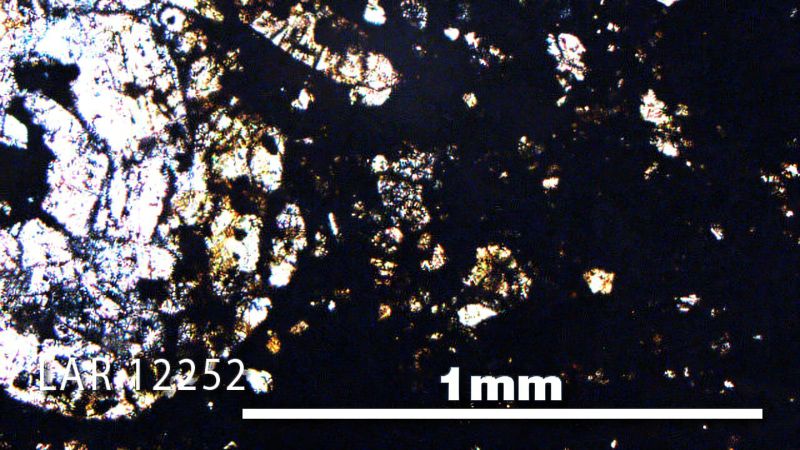Recent research led by a team from the University of Oxford has brought intriguing new insights into the early conditions of Earth, specifically revealing a substantial amount of intrinsic hydrogen. This discovery challenges the longstanding view that Earth’s water supply originated primarily from extraterrestrial sources like asteroids. The detailed findings were documented in a study published in the journal Icarus.
The researchers focused their investigation on an enstatite chondrite meteorite named LAR 12252, believed to match the composition of early Earth. Dated at approximately 4.6 billion years, the meteorite provided a critical window into Earth’s formative years. Through rigorous analysis, scientists found that most of the hydrogen within the meteorite was intrinsic rather than resulting from contamination. This suggests that, in its nascent state, Earth may have harbored enough hydrogen to facilitate the formation of water molecules autonomously.
Lead study author Tom Barrett, a doctoral student in Earth Sciences at Oxford, highlighted the implications of their findings. Historically, it was presumed that Earth’s water was a fortuitous result of asteroid impacts on a still dry planet. “We assumed that Earth has water today because of quite a lucky scenario where it had been hit by these asteroids,” Barrett explained. However, the evidence now indicates that hydrogen and oxygen were already present during the planet’s formation, hinting that Earth could have been “hydrated or wet from its initial formation.”
The ability to detect such low levels of hydrogen was due to the implementation of advanced techniques, specifically X-ray Absorption Near Edge Structure (XANES) spectroscopy. Barrett mentioned that such techniques typically require access to facilities that are not readily available, underscoring the exceptional nature of this study. “To do that you need a particle accelerator. This is like an enormous, really expensive facility, which we’ve been very fortunate to have used,” he noted.
While this research could reshape our understanding of Earth’s early conditions, Barrett cautioned against rapidly concluding that life would have developed sooner due to these findings. The planet’s habitability, he argued, may rely more on how it evolved over time rather than just the materials it was formed from.
Prior research from a team at the French National Centre for Scientific Research had also explored this meteorite. In an August 2020 study, they found that both its chondrules—tiny spherical structures—and embedded organic materials contained traces of hydrogen. However, this earlier research did not account for the full extent of hydrogen present. In their comprehensive analysis, the Oxford team discovered that hydrogen was also attached to sulfur within the meteorite.
The unexpected detection of hydrogen sulfide in the surrounding fine matrix surrounding the chondrules was particularly noteworthy. Barrett expressed enthusiasm about this finding, acknowledging that it strengthens the notion that Earth’s water originated from its materials rather than from external impacts.
Moving forward, Barrett plans to explore additional meteorite samples to arrive at a more comprehensive understanding of Earth’s hydrogen. This exploration is critical for addressing a fundamental inquiry in planetary science—how Earth attained its current characteristics. Co-author of the study, James Bryson, an associate professor at Oxford, reiterated the significance of their discovery, stating that it lends credence to the hypothesis that water formation was a natural occurrence rather than a coincidental event tied to hydrative asteroid strikes.
However, the findings are not devoid of skepticism. Matt Genge, a planetary scientist at Imperial College London who was uninvolved in the study, remarked that while the results are noteworthy, they do not entirely displace the prevailing theories regarding the origins of Earth’s water. He highlighted the possibility that the hydrogen present in the meteorite could have been generated during its lengthy stay in Antarctica before collection, rendering some of the findings potentially inconclusive.
Regardless of varying opinions, Bryson maintains confidence in their data and methodologies. He acknowledged that while some hydrogen could be attributed to Earth’s water, the majority of hydrogen recorded seems representative of the original conditions on early Earth. “We believe we have taken every effort we can in our analysis workflow to mitigate the impact of terrestrial water on our results,” he concluded, indicating a striving for precision and robustness in their study.
This ground-breaking research not only contributes to the ongoing discourse surrounding Earth’s early geology but also invites further exploration into how our planet evolved over billions of years. By delving deeper into the origins and composition of extraterrestrial materials, scientists hope to unlock more secrets about Earth and, potentially, other bodies in our solar system.












